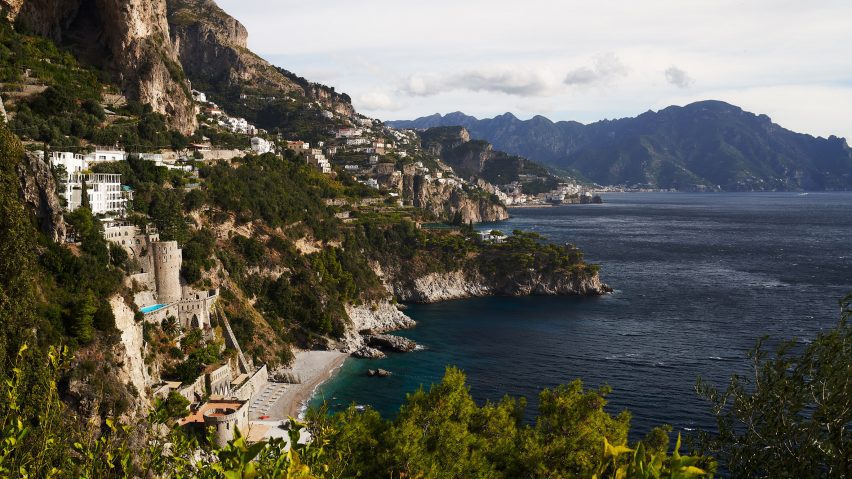
Cliffside hotel on Italy's Amalfi Coast incorporates medieval stone defences
A 1960s Italian hotel and the historic coastal bulwarks below have been restored by architect Bonaventura Gambardella and interior designer Nikita Bettoni.
The Borgo Santandrea hotel overlooks the historic fishing village of Conca dei Marini from its lofty position 90 metres above the sea on Italy's Amalfi Coast.
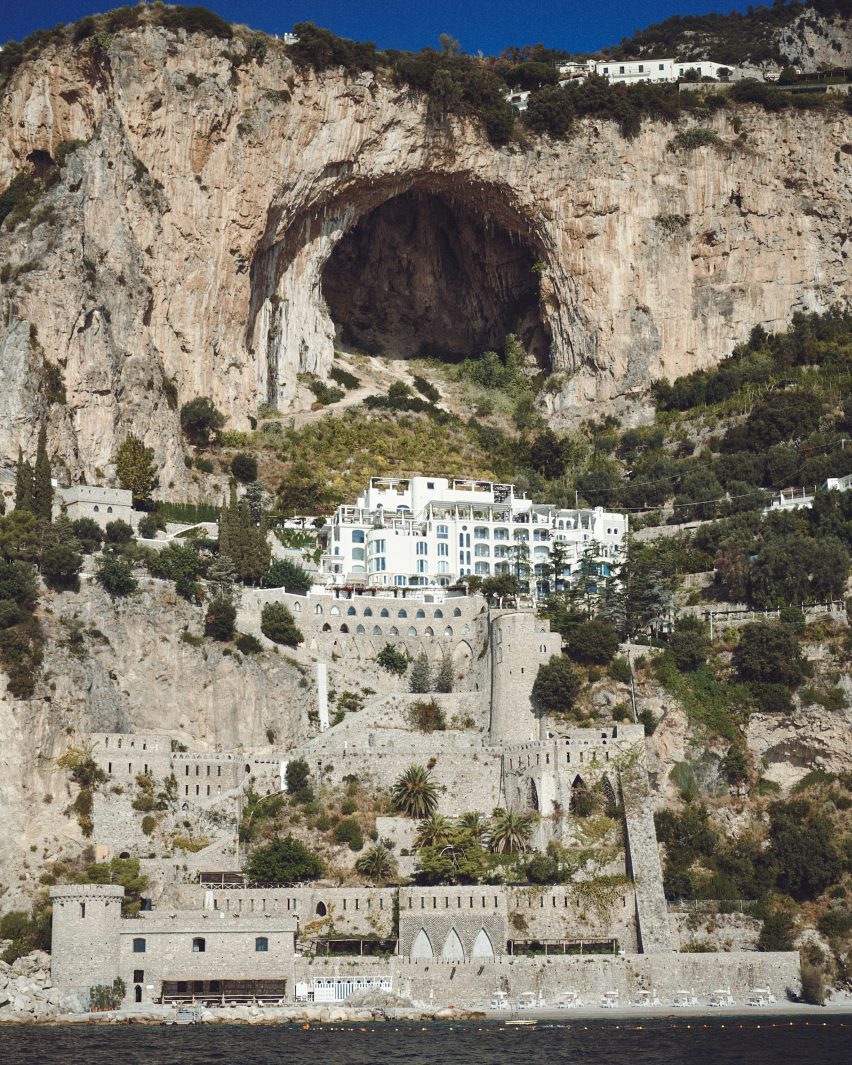
It sits above a series of medieval stone defensive towers and fortifications – which can be traversed by guests to reach the hotel's private beach – and below the dramatic Grotta dello Smeraldo karst carved into the cliffs.
Built in the 1960s, the whitewashed property has been transformed by the local Orlacchio and De Siano families, with help from Ravello-based Bonaventura Gambardella and Nikita Bettoni.
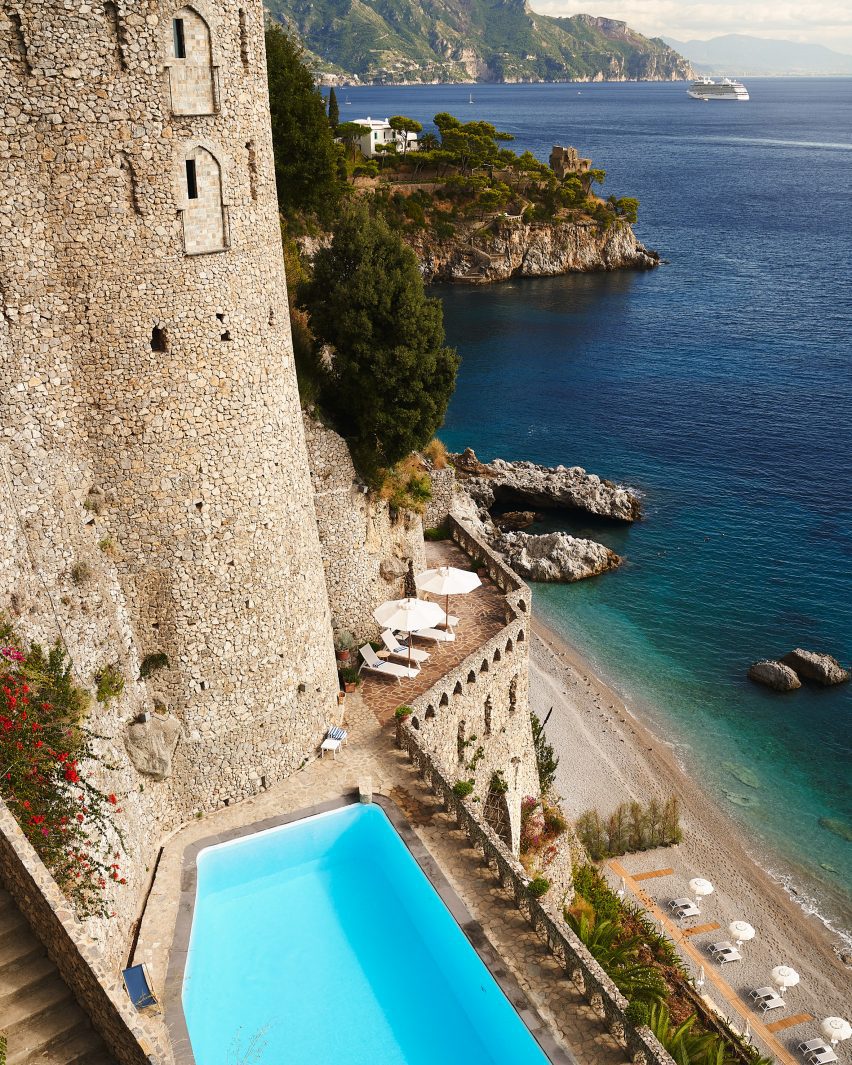
The hotel reopened in 2022 after extensive renovations, and this year introduced four new suites, bringing the total number of rooms to 49.
In keeping with the main building's mid-century flavour, the families have included their collection of furniture pieces from the era alongside custom pieces.
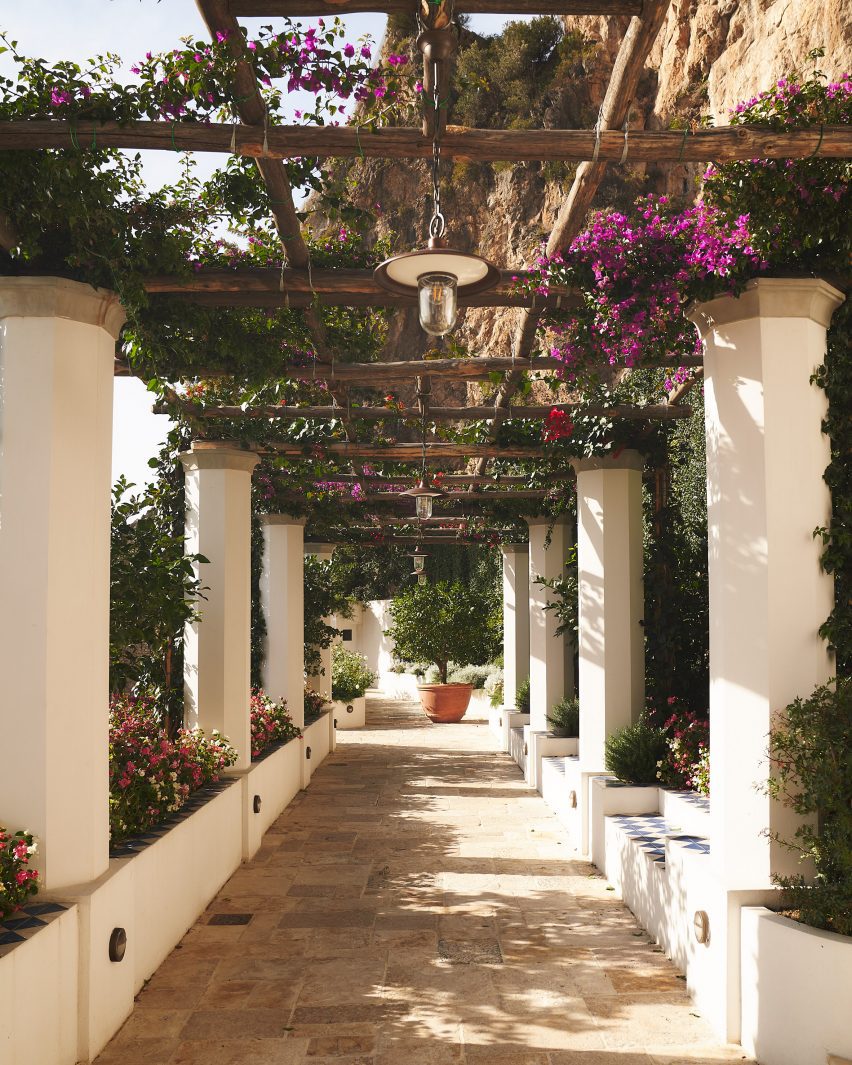
Brass accents throughout the interiors and a statement metal reception counter with a glazed tile backdrop also tie into the time period.
A similar approach was taken inside the 30 full-service rooms and 19 suites, eight of which have private pools and all offer uninterrupted views of the Tyrrheniann Sea.
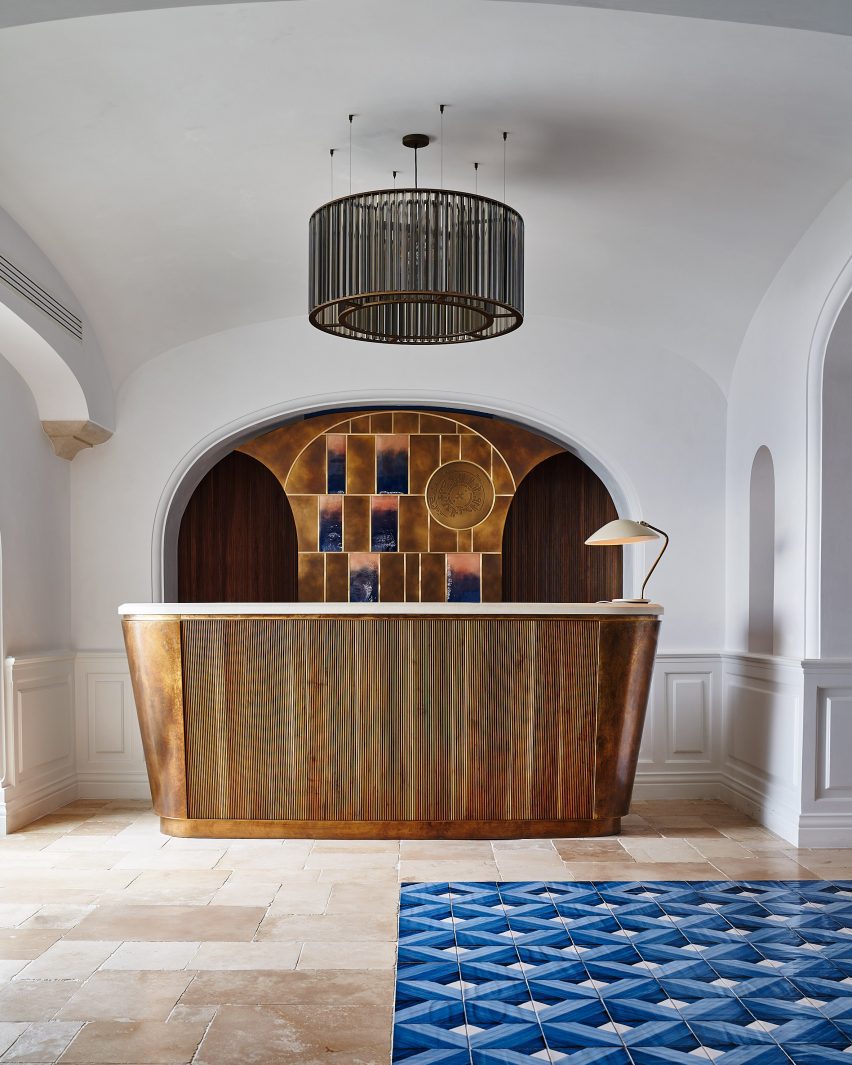
Some of these guest rooms were built into the old stone ramparts, with tall arched windows and door framing the ocean vistas.
Many feature blue and white tiled floors, which match the bathrooms and dictate the colour scheme for furniture and bed linens.
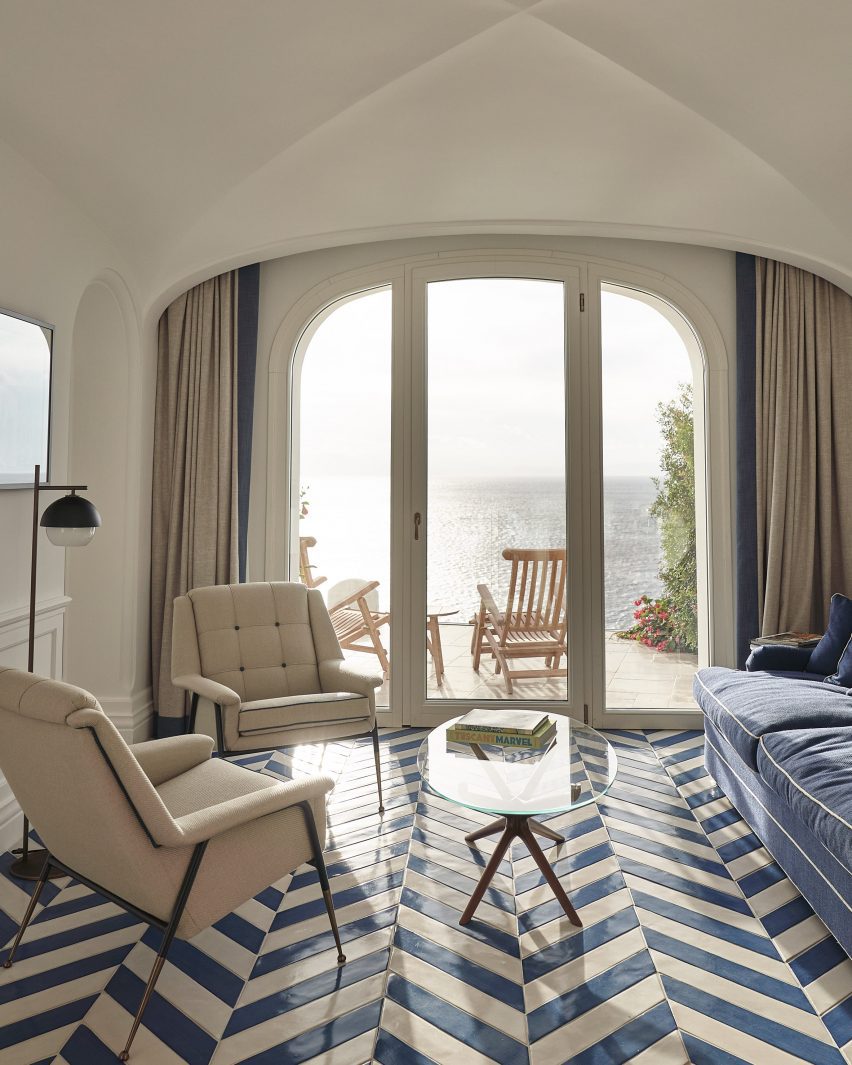
The aim was "to create a unique environment where mid-century design meets Mediterranean style", according to the hotel team.
Breakfast is served under the vaulted ceilings of the naturally lit Alici restaurant, or out on its expansive adjoining terrace.
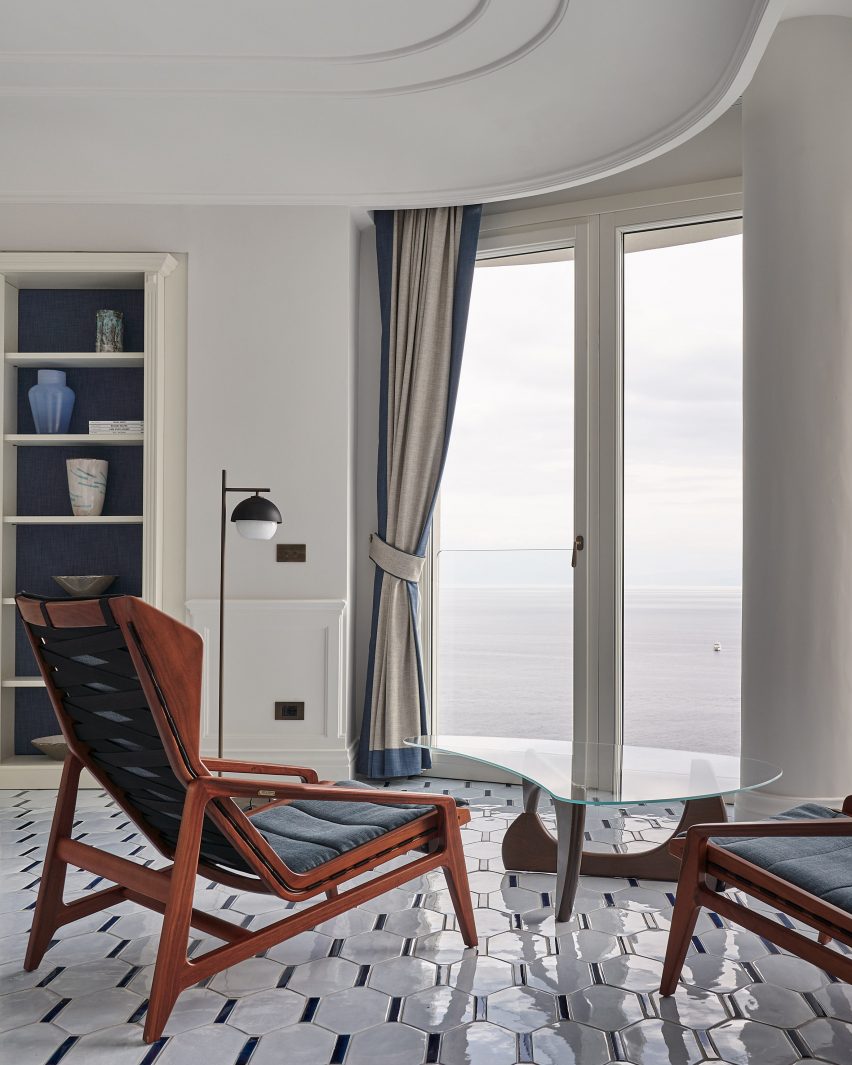
Another dining option is the Marinella Restaurant, offering regional cuisine made using local produce to preserve culinary traditions, which also offers al fresco seating.
A space called La Libreria filled with dark wooden bookcases acts a library by day and is used for private events during the peak summer season.
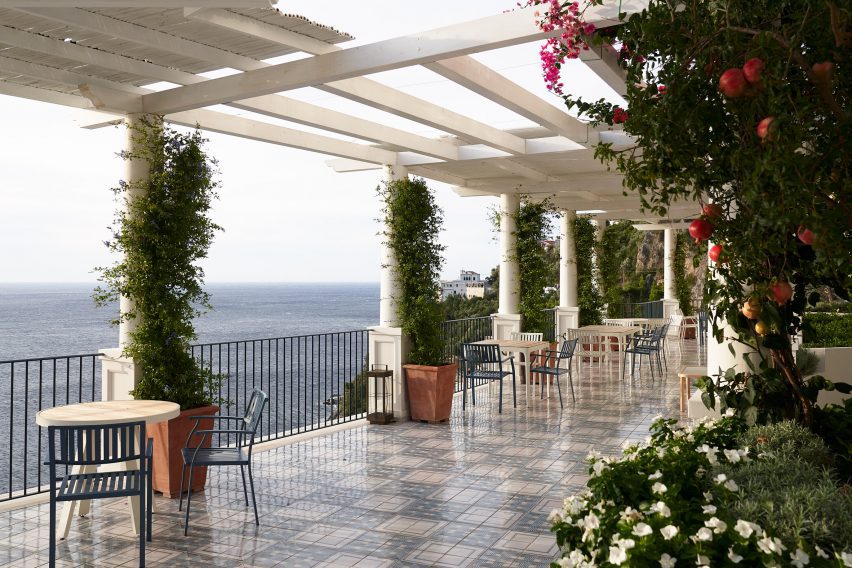
At the base of the cliffs, a private beach club includes an all-day bar and restaurant housed inside an ancient stone building used by fishermen in the 19th century as a boathouse.
The journey down the steep cliffside to the beach takes guests via the ramparts and towers of the old fortifications, where a swimming pool and terrace can be found close to the bottom.
To improve accessibility, the renovation encompassed bolstering the circulatory infrastructure, which includes eight elevators connecting the top of the property to the base.
"All guests can enjoy every feature of Borgo Santandrea and effortlessly access almost every corner of this vertical heaven," the team said.
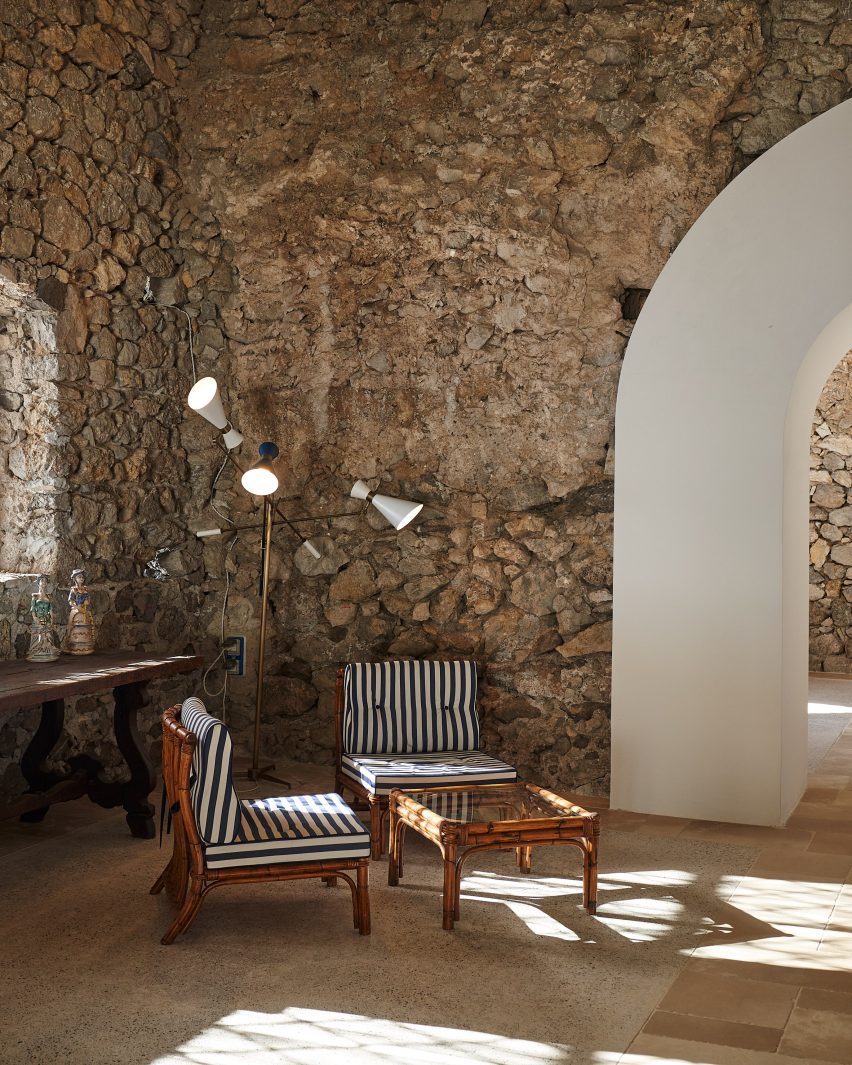
Sustainability was also a key focus during the upgrades and several practices were introduced to lessen Borgo Santandrea's environmental impact.
"We have incorporated some of the finest energy saving technologies, adopted state-of-the-art waste management systems, invested in electric vehicles and implemented many plastic reduction initiatives," said the team.
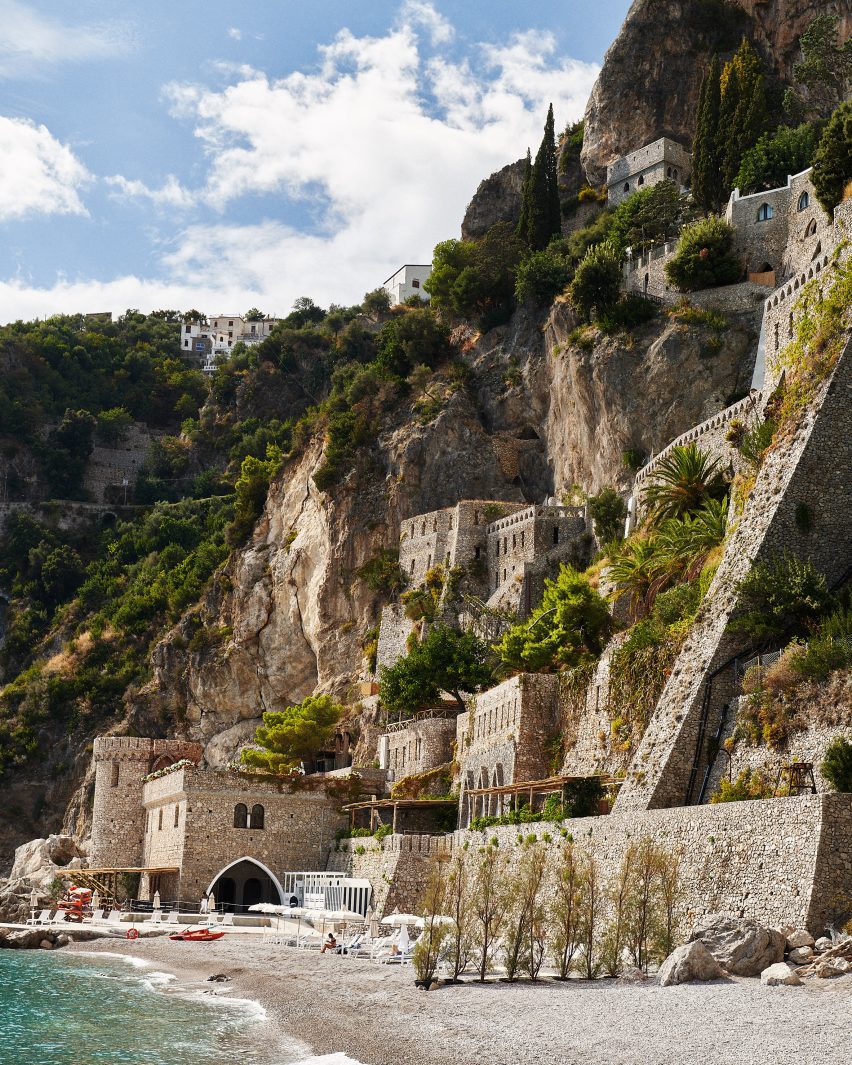
Long considered a favourite destination for its dramatic vistas and coastal charm, the Amalfi Coast's popularity has soared even higher over the past few years, and Italy on the whole has seen a sharp rise in tourism since the end of the Covid-19 pandemic.
Other historic buildings in the country that serve as guest accommodation include Castello del Reschio, a 10th-century castle in Umbria that's now a hotel; Palazzo Daniele, 158-year-old palazzo in Puglia that now includes nine guest suites; and Villa della Quercia, a standalone villa within the Mandarin Oriental Lake Como resort.
The photography is by Adrian Gaut.